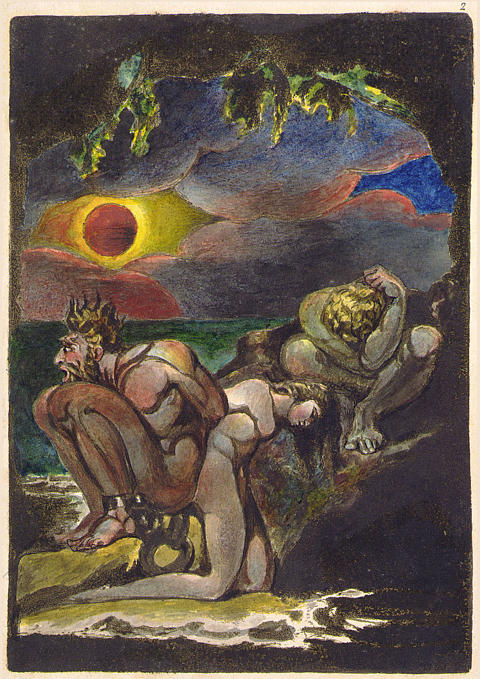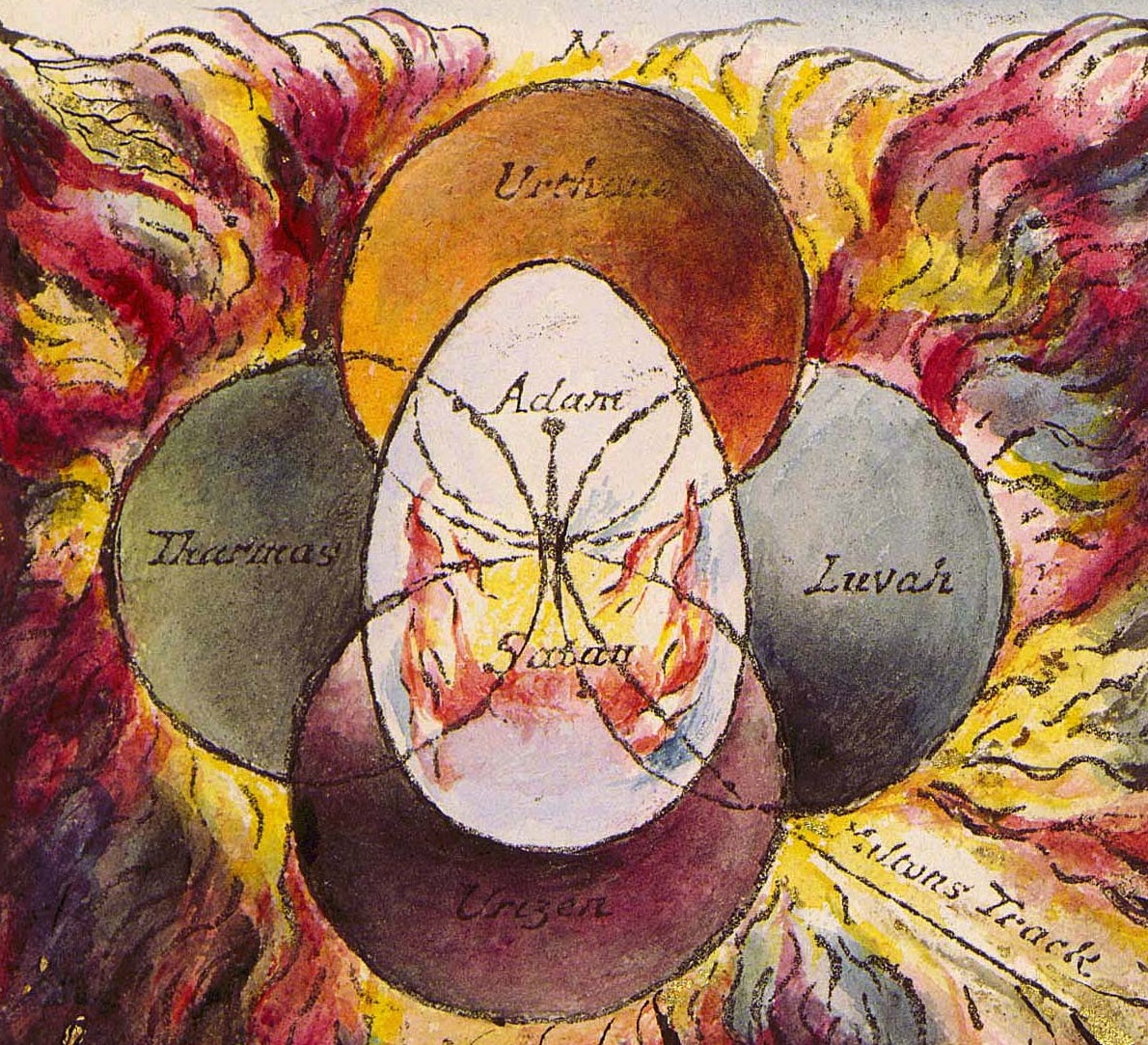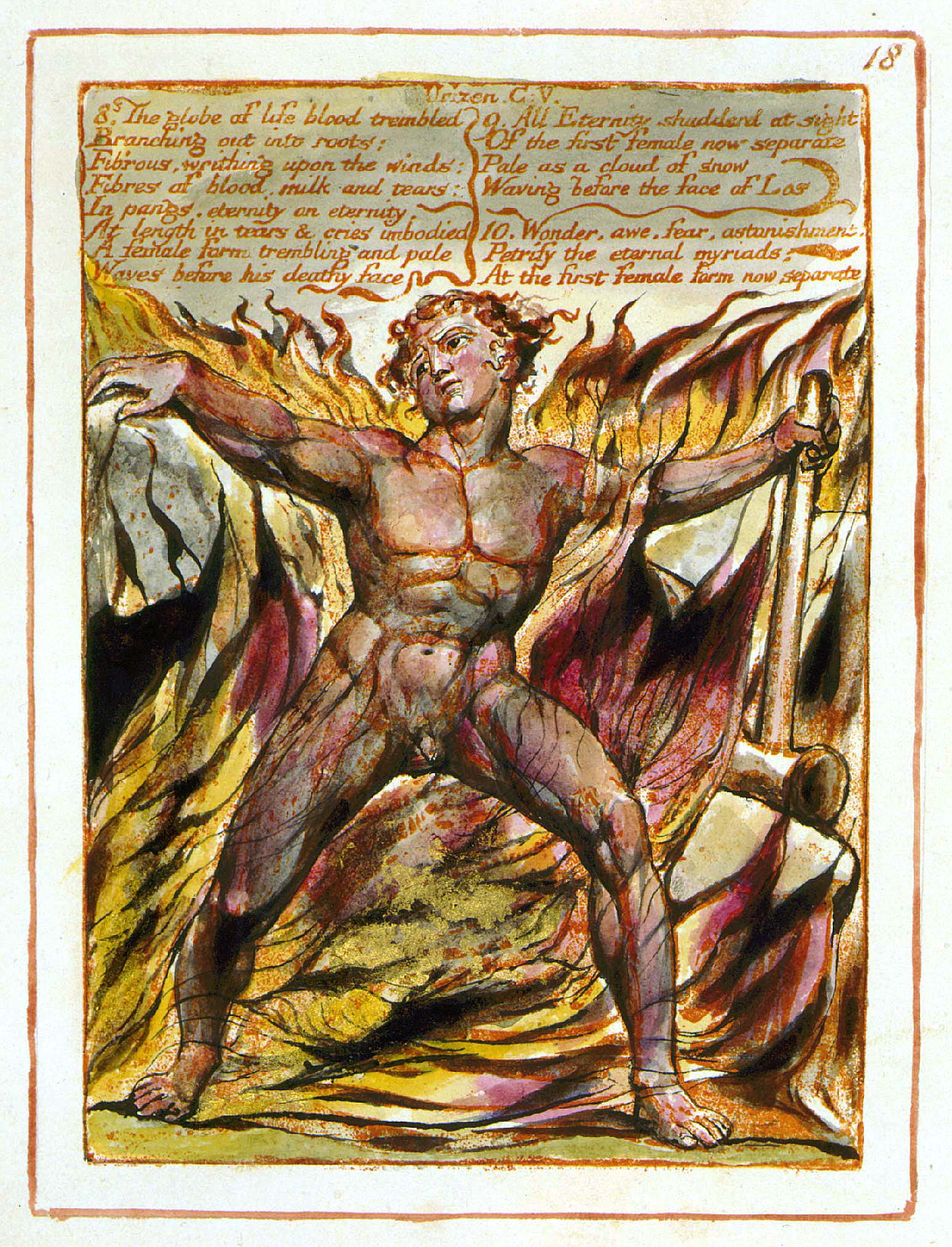|
Bromion
Bromion is a character in the mythology of William Blake. According to S. Foster Damon (''A Blake Dictionary'') he represents Reason, from the side of the poet's mind. Incidence * ''Visions of the Daughters of Albion'', in which he plays a major role * ''Milton'' * ''Jerusalem'' * ''Vala, or The Four Zoas'' Relationships In ''Vala, or the Four Zoas'' he is one of a quartet of four sons, with Rintrah, Palamabron, and Theotormon, whose parents are Los and Enitharmon (or alternatively, sons of Jerusalem Jerusalem (; he, יְרוּשָׁלַיִם ; ar, القُدس ) (combining the Biblical and common usage Arabic names); grc, Ἱερουσαλήμ/Ἰεροσόλυμα, Hierousalḗm/Hierosóluma; hy, Երուսաղեմ, Erusałēm. i ...). He is a major character in ''Visions of the Daughters of Albion''. He rapes Oothoon, and then is bound to her, back to back. References * * William Blake's mythology Literary characters {{Myth-stub ... [...More Info...] [...Related Items...] OR: [Wikipedia] [Google] [Baidu] |
Oothoon
''Visions of the Daughters of Albion'' is a 1793 poem by William Blake, produced as a book with his own illustrations. It is a short and early example of his prophetic books, and a sequel of sorts to ''The Book of Thel''. Plot The central narrative is of the female character Oothoon, called the "soft soul of America", and of her sexual experience. S. Foster Damon (''A Blake Dictionary'') suggested that Blake had been influenced by Mary Wollstonecraft's ''A Vindication of the Rights of Woman ''A Vindication of the Rights of Woman: with Strictures on Political and Moral Subjects'' (1792), written by British philosopher and women's rights advocate Mary Wollstonecraft (1759–1797), is one of the earliest works of feminist philosoph ...'', published in 1792. Oothoon is in love with Theotormon, who represents the chaste man, filled with a false sense of righteousness. Oothoon desires Theotormon but is suddenly, violently raped by Bromion. After Oothoon is raped neither Bromion ... [...More Info...] [...Related Items...] OR: [Wikipedia] [Google] [Baidu] |
Visions Of The Daughters Of Albion
''Visions of the Daughters of Albion'' is a 1793 poem by William Blake, produced as a book with his own illustrations. It is a short and early example of his prophetic books, and a sequel of sorts to '' The Book of Thel''. Plot The central narrative is of the female character Oothoon, called the "soft soul of America", and of her sexual experience. S. Foster Damon (''A Blake Dictionary'') suggested that Blake had been influenced by Mary Wollstonecraft's '' A Vindication of the Rights of Woman'', published in 1792. Oothoon is in love with Theotormon, who represents the chaste man, filled with a false sense of righteousness. Oothoon desires Theotormon but is suddenly, violently raped by Bromion. After Oothoon is raped neither Bromion nor Theotormon want anything to do with her. Symbolism As is usual in Blake, the names of the characters represent their symbolic roles. Theotormon's name is derived from the Greek ''theos'', which means "god", and the Latin ''tormentum'', which m ... [...More Info...] [...Related Items...] OR: [Wikipedia] [Google] [Baidu] |
William Blake's Mythology
The prophetic books of the English poet and artist William Blake contain an invented mythology, in which Blake worked to encode his spiritual and political ideas into a prophecy for a new age. This desire to recreate the cosmos is the heart of his work and his psychology. His myths often described the struggle between enlightenment and free love on the one hand, and restrictive education and morals on the other. Sources Among Blake's inspirations were John Milton's ''Paradise Lost'' and ''Paradise Regained'', the visions of Emanuel Swedenborg and the near-cabalistic writings of Jakob Böhme. Blake also included his own interpretations of druidism and paganism. The Fall of Albion The longest elaboration of this private myth-cycle was also his longest poem, '' The Four Zoas: The Death and Judgment of Albion The Ancient Man'', written in the late 1790s but left in manuscript form at the time of his death. In this work, Blake traces the fall of Albion, who was "originally fourfold b ... [...More Info...] [...Related Items...] OR: [Wikipedia] [Google] [Baidu] |
Rintrah
Rintrah is a character in William Blake's mythology, representing the just wrath of the prophet. Rintrah first appears in '' The Marriage of Heaven and Hell'': "Rintrah roars and shakes his fires in the burdened air" shows him personifying revolutionary wrath. He is later grouped together with other spirits of rebellion in ''The Vision of the Daughters of Albion''. Rintrah is the brother of Palamabron (pity), Bromion Bromion is a character in the mythology of William Blake. According to S. Foster Damon (''A Blake Dictionary'') he represents Reason, from the side of the poet's mind. Incidence * ''Visions of the Daughters of Albion'', in which he plays a major r ... (scientific thought), and Theotormon (desire/jealousy), represented together as either the Sons of Los or of Jerusalem. References William Blake's mythology {{Poetry-stub ... [...More Info...] [...Related Items...] OR: [Wikipedia] [Google] [Baidu] |
Palamabron
Palamabron is a character in William Blake's mythology, representing pity. He is the brother of Rintrah (wrath), Bromion (scientific thought) and Theotormon (desire/jealousy), represented together as either the Sons of Los or of Jerusalem Jerusalem (; he, יְרוּשָׁלַיִם ; ar, القُدس ) (combining the Biblical and common usage Arabic names); grc, Ἱερουσαλήμ/Ἰεροσόλυμα, Hierousalḗm/Hierosóluma; hy, Երուսաղեմ, Erusałēm. i .... William Blake's mythology {{poetry-stub ... [...More Info...] [...Related Items...] OR: [Wikipedia] [Google] [Baidu] |
Milton (Blake)
''Milton'' is an epic poem by William Blake, written and illustrated between 1804 and 1810. Its hero is John Milton, who returns from Heaven and unites with Blake to explore the relationship between living writers and their predecessors, and to undergo a mystical journey to correct his own spiritual errors. Blake's ''Milton'' was printed in his characteristic combination of etched text and illustration supplemented by watercolour. Preface The preface to ''Milton'' includes the poem "And did those feet in ancient time", which were set to music as the hymn called "Jerusalem". The poem appears after a prose attack on the influence of Greek and Roman culture, which is unfavourably contrasted with "the Sublime of the Bible". Text The poem is divided into two "books". Book I opens with an epic invocation to the muses, drawing on the classical models of Homer and Virgil, which were also used by John Milton in ''Paradise Lost''. However, Blake describes inspiration in bodily terms ... [...More Info...] [...Related Items...] OR: [Wikipedia] [Google] [Baidu] |
Jerusalem (Blake)
''Jerusalem'', subtitled ''The Emanation of the Giant Albion'' (1804–1820, with additions made even later), is the last, longest and greatest in scope of the prophetic books written and illustrated by the English poet, artist and engraver William Blake. Etched in handwriting, accompanied by small sketches, marginal figures and huge full-plate illustrations, it has been described as "visionary theatre". The poet himself believed it was his masterpiece and it has been said that "of all Blake's illuminated epics, this is by far the most public and accessible". Nonetheless, only six copies were printed in Blake's lifetime and the book, like all of Blake's prophetic works, was all but ignored by his contemporaries. The lyric to the famous hymn '' Jerusalem'' (text also by Blake, with music by Sir Hubert Parry) is not connected to this poem. It is in fact taken from the preface to another of Blake's "prophetic books", ''Milton''. Production technique The poem, which was produce ... [...More Info...] [...Related Items...] OR: [Wikipedia] [Google] [Baidu] |
Vala, Or The Four Zoas
''Vala, or The Four Zoas'' is one of the uncompleted prophetic books by the English poet William Blake, begun in 1797. The eponymous main characters of the book are the Four Zoas (Urthona, Urizen, Luvah and Tharmas), who were created by the fall of Albion in Blake's mythology. It consists of nine books, referred to as "nights". These outline the interactions of the Zoas, their fallen forms and their Emanations. Blake intended the book to be a summation of his mythic universe but, dissatisfied, he abandoned the effort in 1807, leaving the poem in a rough draft and its engraving unfinished. The text of the poem was first published, with only a small portion of the accompanying illustrations, in 1893, by the Irish poet W. B. Yeats and his collaborator, the English writer and poet Edwin John Ellis, in their three-volume book '' The Works of William Blake''. Background Blake began working on ''Vala, or The Death and Judgement of the Eternal Man: A Dream of Nine Nights'' while he wa ... [...More Info...] [...Related Items...] OR: [Wikipedia] [Google] [Baidu] |
Los (Blake)
In the mythological writings of William Blake, Los is the fallen (earthly or human) form of Urthona, one of the four Zoas. He is referred to as the "eternal prophet" and creates the visionary city of Golgonooza. Los is regularly described as a smith, beating with his hammer on a forge, which is metaphorically connected to the beating of the human heart. The bellows of his forge are the human lungs. Los's emanation, Enitharmon, represents spiritual beauty and embodies pity, but at the same time creates the spatial aspect of the fallen world, weaving bodies for men and creating sexual strife through her insistence upon chastity. In the ''Book of Urizen'' (1794), Los and Enitharmon have a child, Orc, who is the embodiment of the spirit of revolution. The name ''Los'' is, by common critical acceptance, an anagram of '' Sol'', the Latin word for "sun". ''Los'' is also the plural form of ''El'', an ancient Hebrew deity. Such innovations are common in many of Blake's prophetic poems. B ... [...More Info...] [...Related Items...] OR: [Wikipedia] [Google] [Baidu] |
Enitharmon
Enitharmon is a major female character in William Blake's mythology, playing a main part in some of his prophetic books. She is, but not directly, an aspect of the male Urthona, one of the Four Zoas. She is in fact the Emanation of Los, also male. There is a complex verbal nexus attached. The Zoa Tharmas has emanation Enion, and Eni-tharm(as)-on is one derivation of her name. That should perhaps be read in the inverse direction though, as a construction of the Tharmas/Enion pair's names. Within Blake's myth, she represents female domination and sexual restraints that limit the artistic imagination. She, with Los, gives birth to various children, including Orc. Background It is possible that the character Enitharmon was based on Blake's wife, Catherine Blake. In a letter from Blake to his friend Thomas Butts, Jr. on 22 November 1802, he claimed that his place at Surrey had "Enitharmon's bower". S. Foster Damon explained the name Enitharmon as a derivation or an elision of (z)enit ... [...More Info...] [...Related Items...] OR: [Wikipedia] [Google] [Baidu] |




